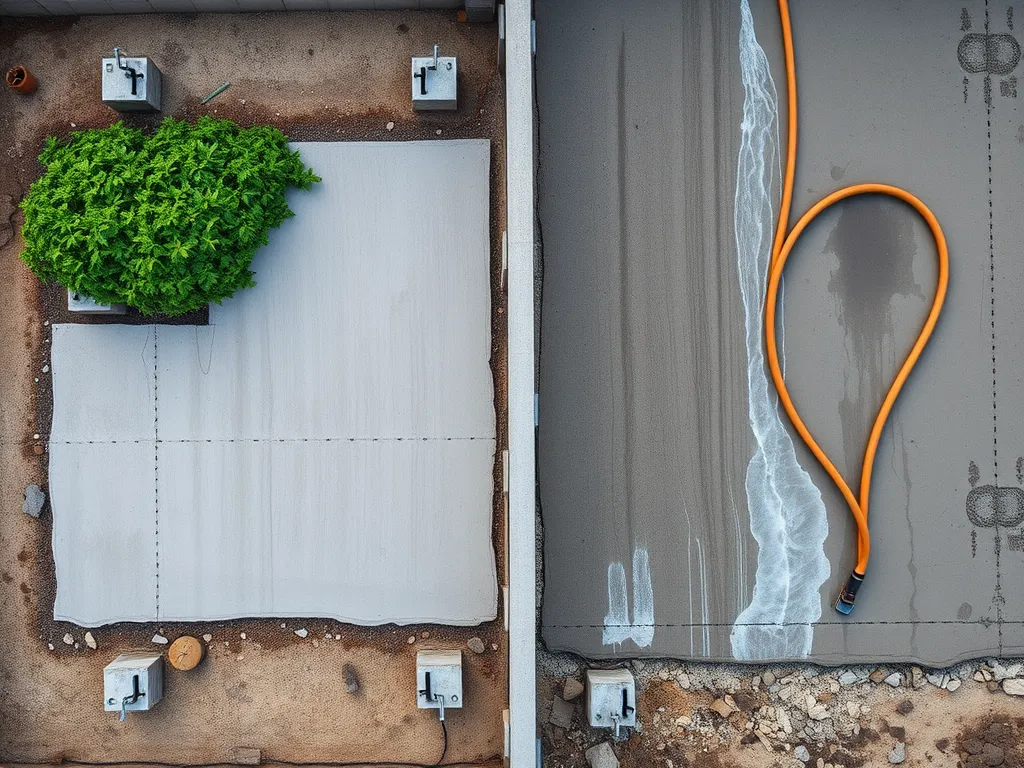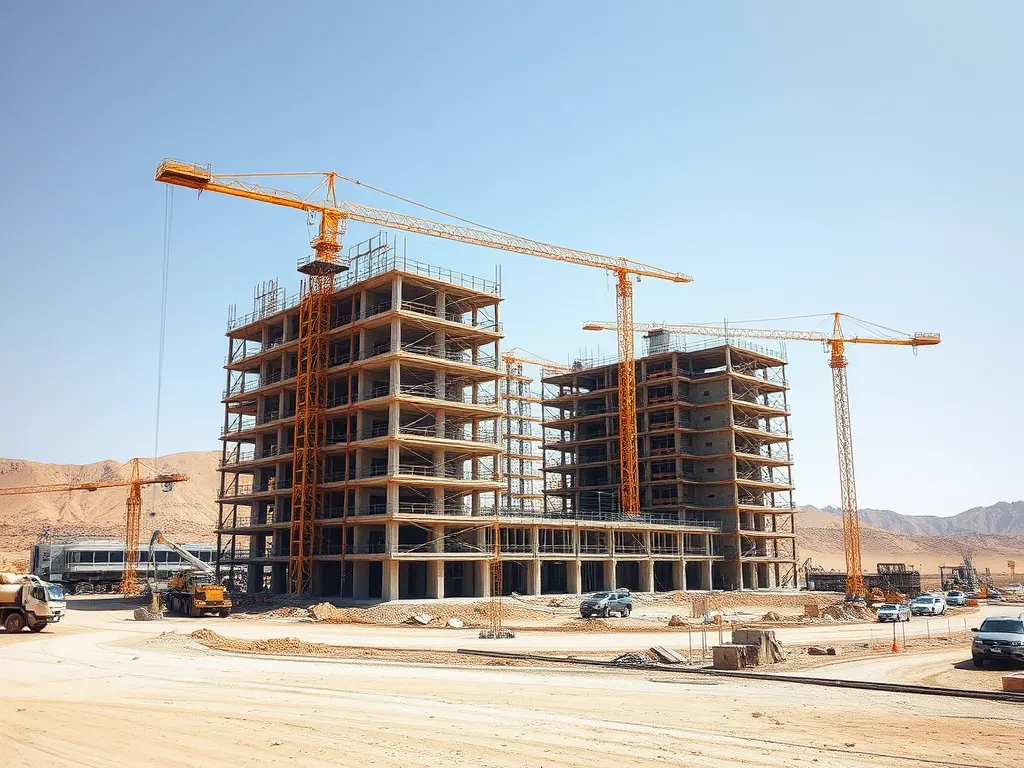Natural Vs Water Curing for Asphalt: Which Method Works Best?
Published on: November 3, 2025 | Last Updated: April 14, 2025
Written By: George Voss
Natural and water curing are two primary methods to harden asphalt surfaces, differing in process speed, labor needs, and weather dependence. Natural curing lets fresh asphalt dry through air exposure and sunlight over 3-7 days, while water curing uses controlled spraying (5-10 gallons per square yard) to accelerate chemical bonding within 24-48 hours. The choice impacts durability, surface quality, and project costs by up to 35%.
This article breaks down how each method works, compares curing times under different temperatures, and examines costs. Learn why natural curing saves $1.50-$3 per square foot but risks cracks in cold weather. Discover how water curing prevents premature drying in heat yet demands skilled labor. We’ll explore weather limits, environmental impacts, and which method suits driveways vs highways.
Contents
Understanding Asphalt Curing Methods
Asphalt curing determines how freshly laid pavement gains strength and durability over time. This process allows bitumen (the sticky binder) to bond fully with aggregates, creating a hardened surface ready for traffic loads. Two approaches dominate the field: natural curing vs water curing methods.
What is Asphalt Curing?
Curing refers to the controlled drying and hardening of asphalt after placement. During this phase, excess moisture evaporates, while bitumen forms stronger bonds under optimal conditions. Natural curing relies on ambient air and sunlight, whereas water curing uses controlled sprays or saturated coverings to regulate moisture loss. Both methods aim to prevent cracks, raveling, or premature wear caused by rapid drying or trapped moisture.
Proper Curing’s Role in Asphalt Longevity
Effective curing boosts asphalt’s load-bearing capacity by 20-35% compared to poorly managed processes. Without proper techniques, surfaces develop thermal cracks in freezing temperatures or soften under heavy traffic at 140°F+ pavement temperatures. Natural curing vs water curing methods directly affect outcomes:
| Factor | Impact |
|---|---|
| Binder Oxidation | Slower oxidation in water curing extends pavement life by 3-5 years |
| Surface Porosity | Natural curing creates 8-12% denser surfaces, reducing water infiltration |
Projects using PG 64-22 binders or Superpave mixes often specify curing methods early to meet ASTM D6372 standards for compaction and stability.
Next, we’ll break down how each method operates under real-world conditions.
Natural Curing Methods for Asphalt
Natural curing allows asphalt to harden through air contact and sunlight without adding liquids. This approach counts on climatic factors to do the work, making it a go-to for many road projects.
How Natural Curing Works
Sunlight and airflow trigger oxidation, a chemical process that bonds asphalt molecules. This creates a rigid pavement layer. Humidity levels and ambient temps directly impact how fast this occurs. For instance, at 70°F with low humidity, full curing may take 3-5 days.
Key Components of Natural Curing
Four factors drive success: wind speed, solar radiation, air temp (65-85°F ideal), and humidity below 60%. UV rays speed up polymerization, a molecular bonding process that boosts strength. Projects in arid zones often favor this method due to consistent dry conditions.
Advantages of Natural Curing
No pumps, hoses, or labor for water application cuts costs by up to 30%. It’s sustainable—zero gallons wasted—and suits large areas like highways. Minimal supervision is needed once asphalt is laid, saving up to 15 labor hours per project.
Limitations of Natural Curing
Rain or temps below 50°F can stall curing, risking cracks or uneven surfaces. In humid areas, curing might drag beyond 7 days, delaying traffic reopening. Nighttime temp drops may also cause thermal stress, reducing lifespan by 2-3 years in some cases.
Natural curing vs water curing often comes down to climate and timeline. For projects needing rapid results or facing unstable weather, another approach might work better—a topic we’ll unpack next.
Water Curing Methods for Asphalt
Water curing speeds up asphalt hardening by adding moisture at set times. This method uses spray trucks, hoses, or sprinklers to keep the mix damp for 3-7 days. It works best when temps stay above 50°F.
How Water Curing Works
Workers apply water right after paving. The goal: stop the asphalt from drying too fast. Moisture helps bind stone and bitumen. This boosts strength and stops cracks from forming early.
Key Components of Water Curing
- Timed sprays (every 2-4 hours)
- Water layer 1/8″ thick
- Temp checks to avoid rapid cooling
- No standing water (drain slopes needed)
Advantages of Water Curing
Water curing cuts wait time by 30-50% vs natural methods. It ups surface strength by 15-20% in tests. Hot zones see fewer cracks. Ideal for tight deadlines like road repairs or mall jobs.
Limitations of Water Curing
Uses 500-1,000 gal per lane mile daily. Needs crew to run gear non-stop. Rain can mess up spray plans. Over-spraying weakens edges. Costs rise $0.50-$1.25 per sq yard for gear and labor.
Next, we’ll break down how natural and water curing stack up in real-world use.
Also See: Asphalt Maintenance for Commercial Properties: Key Tips
Natural Vs Water Curing: Key Differences in Asphalt Applications
Curing Duration Comparison
Natural curing takes 7-14 days for asphalt to reach 90% strength, relying on ambient heat and airflow. Water curing accelerates the process to 3-5 days through controlled moisture applications. Temperature plays a critical role: natural curing slows below 50°F, while water curing maintains progress at 40°F with proper techniques.
Labor and Resource Requirements
Natural curing demands minimal labor—crews simply monitor site conditions. Water curing requires active involvement: workers deploy sprinkler systems, spray hoses, or water trucks 3-5 times daily. This method adds $0.50-$1.25 per square foot in labor and equipment costs compared to natural approaches.
Weather Dependency
Natural curing fails in rain or high humidity, risking incomplete bitumen bonding. Water curing adapts better to variable climates but stops below freezing. Projects in arid regions like Arizona favor natural curing, while Midwest contractors often blend both methods across seasons.
Surface Quality Outcomes
Water-cured asphalt shows 30% fewer surface cracks in year-one inspections due to even hydration. Natural curing can create dry spots in direct sunlight, requiring extra sealcoating. Both methods achieve 3,000-4,000 psi compressive strength when executed properly.
Cost Effectiveness
Natural curing saves $1,200-$2,500 per acre in water and labor costs. Water curing prevents weather delays that cost $800/day for medium projects. Long-term, water-cured roads need 15% less maintenance over a decade according to NAPA studies.
These factors set the stage for evaluating environmental impacts—a critical next step for eco-conscious projects.

Environmental Considerations
Both natural curing and water curing shape asphalt’s eco-footprint. Choices affect local resources, energy grids, and long-term sustainability.
Water Usage and Conservation
Water curing uses 500-1,000 gal daily per mile of road. Sprinklers or tank trucks spray fresh water to keep asphalt moist. In dry zones, this strains supply. Systems with recycled water cut use by 30-50%, but need extra gear.
Natural curing uses no water. Heat and wind dry the mix. This saves 10,000+ gal per project in arid states. Less strain on wells or city lines helps keep costs low for towns.
- Water curing risks waste if not timed right
- Natural curing works best where rain is rare
- Dry climates save more with sun-based methods
Energy Consumption Comparison
Water curing needs pumps running 8-12 hrs daily. Diesel trucks haul water, burning 2-5 gal per hour. Electric pumps draw 5-10 kWh, adding grid load.
Natural curing skips machines. Sun heat and air flow do the work. Zero fuel or power cuts job-site emissions by 60-80% vs wet methods. Less gear means lower noise and exhaust fumes.
- Water pumps cost $15-$30/hr in fuel
- No energy costs for sun-dried asphalt
- Mills use more power to make new water
Balance eco-impacts with project needs. Next, explore how curing picks shape costs and timelines.
Frequently Asked Questions
Which is Better for Asphalt: Natural Curing or Water Curing?
The better method depends on various project-specific factors such as climate, timeline, and budget. Natural curing is cost-effective and suitable for dry regions, while water curing is faster and results in a more resilient surface in humid or rainy conditions.
What Are the Two Primary Asphalt Curing Methods?
The two primary methods of asphalt curing are natural curing, which relies on ambient air and sunlight, and water curing, which involves controlled application of water to keep the asphalt moist during the curing process.
How Does Weather Affect Natural Curing Effectiveness?
Weather significantly impacts natural curing as it relies on ambient conditions. High humidity and cooler temperatures can prolong the curing time, while rain can disrupt the process. Ideally, natural curing is most effective in warm, dry environments.
Can Water Curing Damage Asphalt Surfaces?
While water curing is generally safe, improper application, such as over-spraying, can weaken asphalt edges. Additionally, if temperatures are too low, water curing can halt the curing process entirely, which might lead to potential damage.
How Do the Environmental Impacts Differ Between Natural and Water Curing Methods?
Natural curing has lower environmental impacts as it does not require water or energy from pumps, reducing emissions and conserving water. In contrast, water curing significantly consumes water resources and energy, which can be detrimental in regions facing drought or limited water supplies.
What Are the Cost Implications Of Choosing Between Natural and Water Curing?
Natural curing is typically more cost-effective due to minimal labor and resource requirements, saving significant water and labor costs. Water curing, while faster, incurs additional expenses for equipment and personnel, potentially increasing overall project costs.
Are There Specific Project Scenarios Where One Curing Method is Preferred Over the Other?
Yes, natural curing is preferred for large projects in arid regions, while water curing is advantageous for projects with tight deadlines or in locations with variable weather conditions. Each method’s effectiveness can vary based on site-specific challenges.

Closing Thoughts
Choosing between natural and water curing methods for asphalt significantly affects project outcomes. Natural curing relies on ambient moisture and conditions, making it cost-effective and simple but highly weather-dependent. It excels in hot climates and requires minimal resources.
In contrast, water curing ensures consistent moisture levels, enhancing surface quality and durability. However, it demands more resources and specific weather conditions for optimal results.
Ultimately, the decision should align with project requirements, weather patterns, and budget constraints. Each method has its strengths and limitations, so weigh the benefits carefully for best results.
For more detailed information on asphalt curing methods and calculators, check out Asphalt Calculator USA.
Useful References for You:
- Huang, Y. H. (2004). Pavement Analysis and Design (2nd ed.). Upper Saddle River, NJ: Pearson/Prentice Hall.
- The Most Effective Concrete Curing Methods: Know Before Curing – Mir Concrete Block
- Selecting the Most Appropriate CIPP Installation & Curing Method
- A comparison of water curing and standard curing on one-part alkali-activated fly ash sinking beads and slag: Properties, microstructure and mechanisms – ScienceDirect
- Natural Versus Synthetic Polymers for Wastewater Treatment


